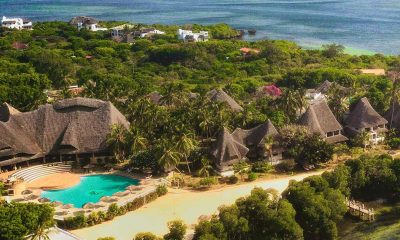News
Pierre-Yves Cousteau’s Galapagos: Final Dives
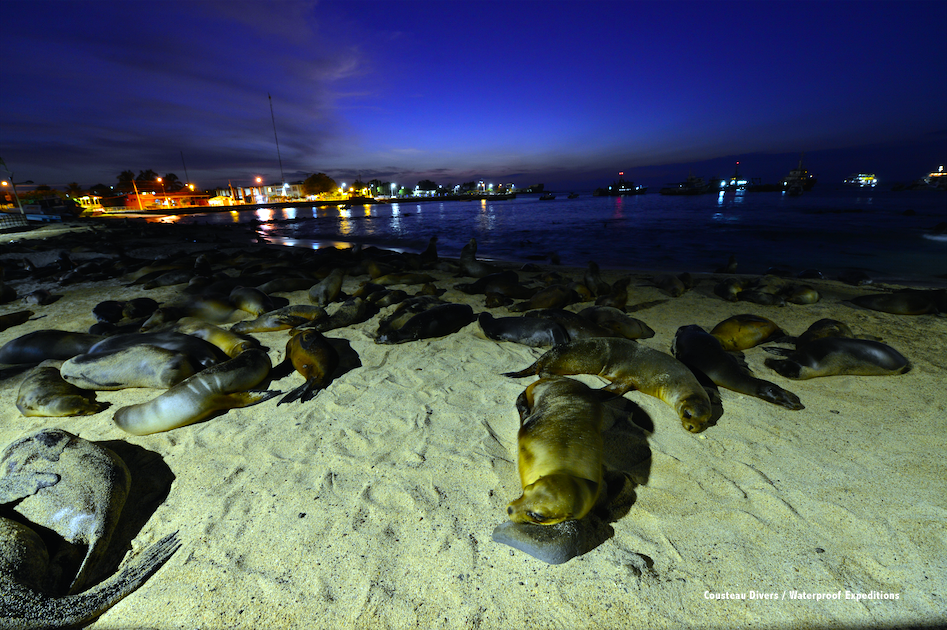
Read Part 2 of Pierre-Yves’ Galapagos blog here.
One week in San Cristobal followed by a second diving expedition. Nothing scheduled but sunsets the first week. The waterfront of San Cristobal is forever bathed in the pungent smell of sea lion body odour. The Loberia and Punta Carola offer beautiful waves and vast spaces of peaceful wilderness. With nothing else to do, I decide to investigate further the establishment of the new marine sanctuary of Wolf and Darwin and its impact on the local population.

I make my way to the Loberia, a beautiful rocky coast with beaches and powerful waves, to watch the sunset. I take a taxi to go there and back and ask the cab driver about the new sanctuary. He says many families on San Cristobal are fishermen, and that some of them used to go to Wolf and Darwin. He says there was a fishermen’s protest in the village that very morning in town. They are claiming their right to fish in Wolf and Darwin. He says that the three representatives of the fishermen cooperatives signed the agreement to make the sanctuary without consulting with their peers. He mentions rumors of bribery.
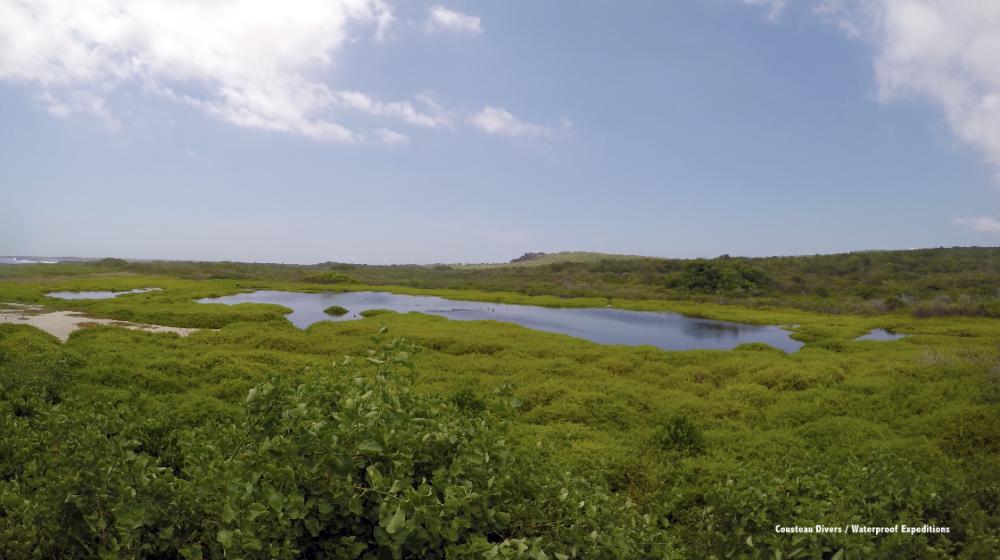
I head to the mayor’s office to get his opinion about the new sanctuary. He says the sanctuary was imposed onto the fishermen, that they were not sufficiently consulted or compensated, and that they should be considered in these kinds of decisions. Regarding tourism in general, he says he wishes the marine activities related to the sanctuary benefitted the people of the islands more than they do, implying that foreign companies capture much of that value.
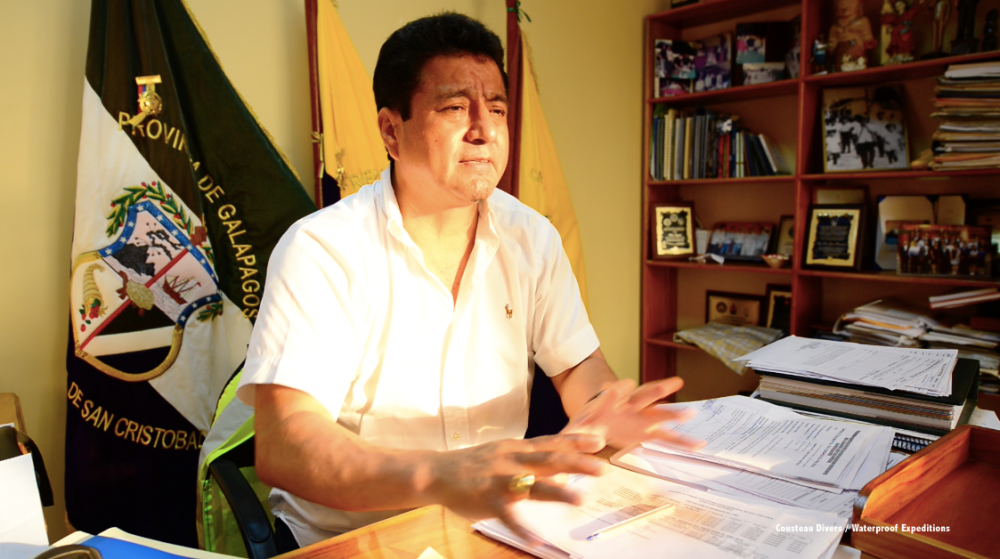
The next day I have lunch with Roberto Ochoa, a conservationist with marketing background who works with the ministry of tourism. He was part of the initiative to declare Wolf and Darwin no-take zones and joined their expedition earlier this year. According to their observations over 40 days, these two islands have the highest shark abundance in the world! He says the fishermen were not only consulted, they were also compensated for not fishing, subsidized to ease their reconversion to another professional activity. Later, a meeting with representatives of the ministry of environment of Ecuador reveals that much effort was put into building local consensus. They are shocked to hear about the protests, and say that the same people who are protesting signed the documents agreeing to the sanctuary.

Why are there two opposite stories being told? How come the fishermen were demonstrating? Did the consultation and compensation package miss out some key stakeholders? Did the news of a compensation package suddenly turn the inhabitants of the island of San Cristobal into fishermen? The week goes by and I am unable to find an answer. Enforcing the sanctuary will be as hard as it is remote and uninhabited. Raising awareness and educating the local population to the world-class value of their natural resources will be extremely important in order to foster stewardship. The presidential signature last week marked the beginning of an endless endeavor, not the landmark of an accomplishment.
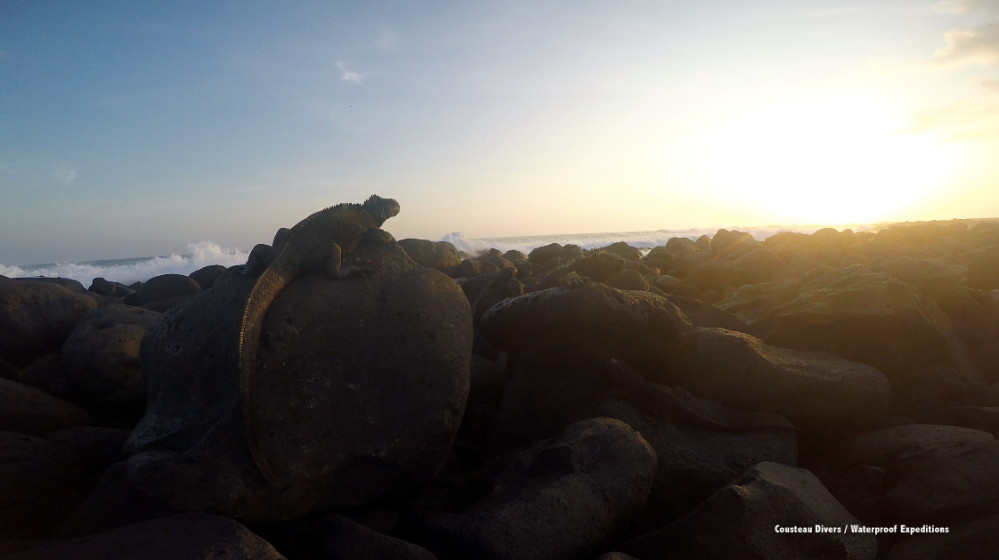
Seven sunsets later, I’ve met kind and interesting people in San Cristobal. I’ve seen sea lions crash salsa lessons and marine iguanas basking on black rocks, spitting seawater from their nostrils. I spoke to the students of San Francisco University about marine conservation issues and a small group stayed afterwards to discuss possible solutions out of the mess we’re in. Dying oceans… a collateral damage of our materialistic hypnosis. The silver bullet, if there is one, may reside in cultural and technological innovation. We also discuss bottom-up conservation and the empowerment of local communities to manage their resources, the decentralisation of environmental decision-making. It is inspiring to see an enthusiastic and energetic young generation, motivated to make the world a better place.
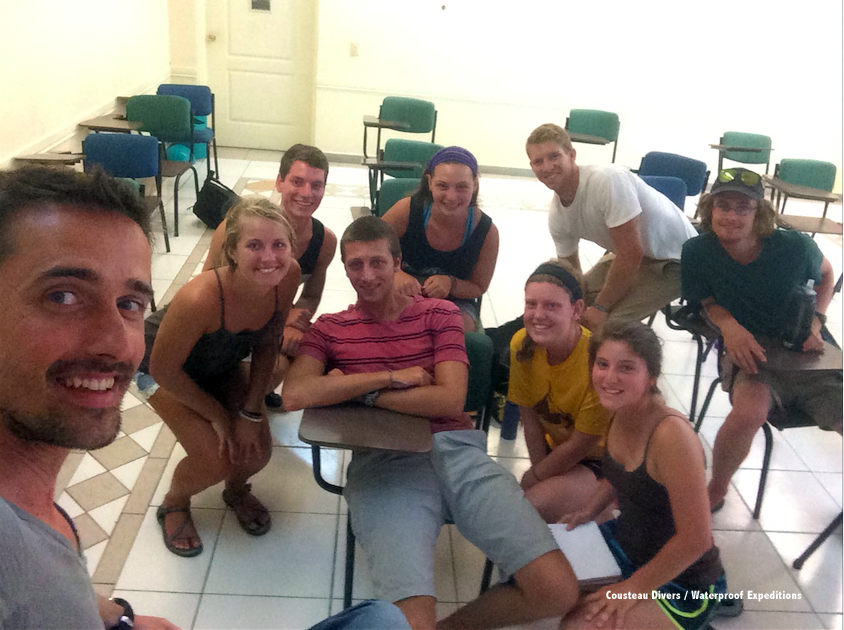
Finally, I board the Galapagos Sky again and I meet the new passengers of this second expedition. They are mostly Indians from Bombay, from a variety of professional backgrounds, but also an English mathematician and banker couple and an American physicist with his retired army friend. Discussions on board range from spirituality and shamanism to quantum physics. New questions arise from our discussions… How can behavioral change be fostered in emerging economies, based on lessons learned from western countries? How can environmental stewardship compete for brain bandwidth, using the phenomenal behavioral conditioning machinery that is advertising and marketing. One day perhaps, faced with environmental emergency, mankind will use the powerful tools that created the problem to steer the ship.

A few days later, we are diving again, in what I now feel is the richest, most extraordinary dive site in the world. Every instant of each dive in the Galapagos Islands, my attention is captured by some agitation of their untamed ecosystem. Everywhere around me, life is lush and surprising.

Near the island of Fernandina, the sea’s surface is littered with scavenging marine iguanas, breathing turtles and sunbathing sea lions. I befriend a puffer fish that follows me during a whole dive. A whale exhales in the distance.

In Isabella, sea lions follow in my blind spot to use the video lights to hunt. One of them photo-bombs a test-shot: I did not see it for the whole dive, but discover it in one of my pictures… In Bartolome, I lose orientation as I enter a cloud of dozens of Mobula rays, feeling as though I am one of them.
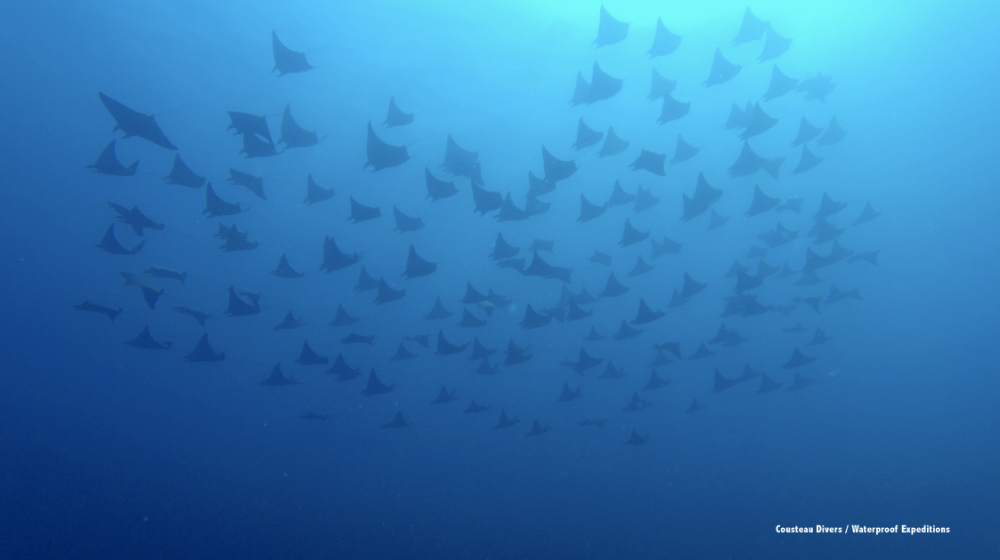
Back in Wolf and Darwin, rivers of fish flow along the rocky seascape against the current. Two white-tip sharks engage in a circular mating dance, the male biting down regularly on the female’s pectoral fins. Out of the deep blue, a group of hammerheads daringly approach me and scatter as soon as I can no longer hold my bubbles… Returning from the dives, dolphins play in the bow of our dingy.
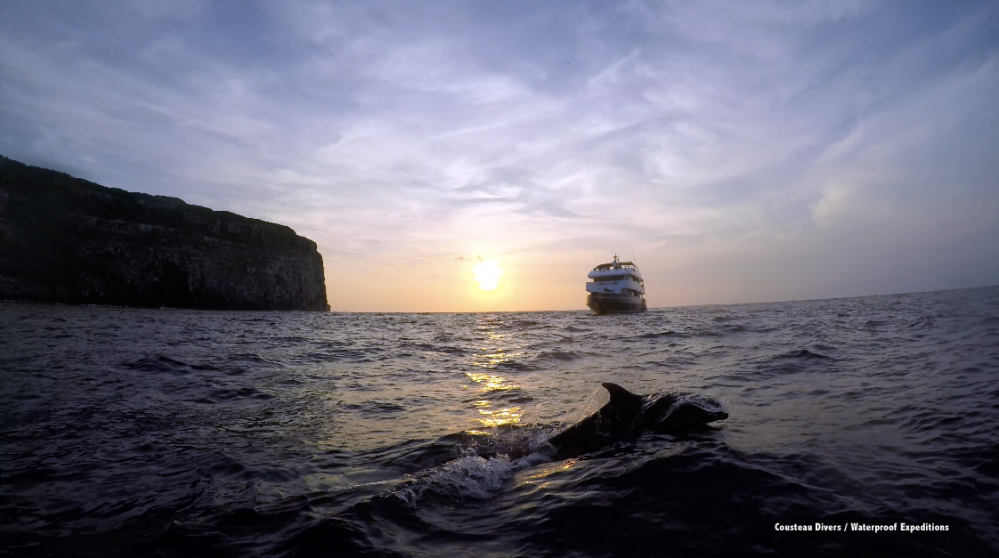
Temperatures varied greatly from site to site, from 19 to 28 degrees Celsius, and again I collected them using the Sensus Ultra and my dive computer as part of Project Hermes. The currents had greatly reduced since the last trip, and overall temperatures were a couple degrees lower. The El-Niño phenomenon seems to be receding here, just as corals begin to bleach on the other side of the planet, in Northern Australia. I leave the Sensus recording device with our guide Jeff, who agrees to using it on his dives year-round, which will provide a more comprehensive data set. This is the first of thirty locations to receive the temperature logger across the world.
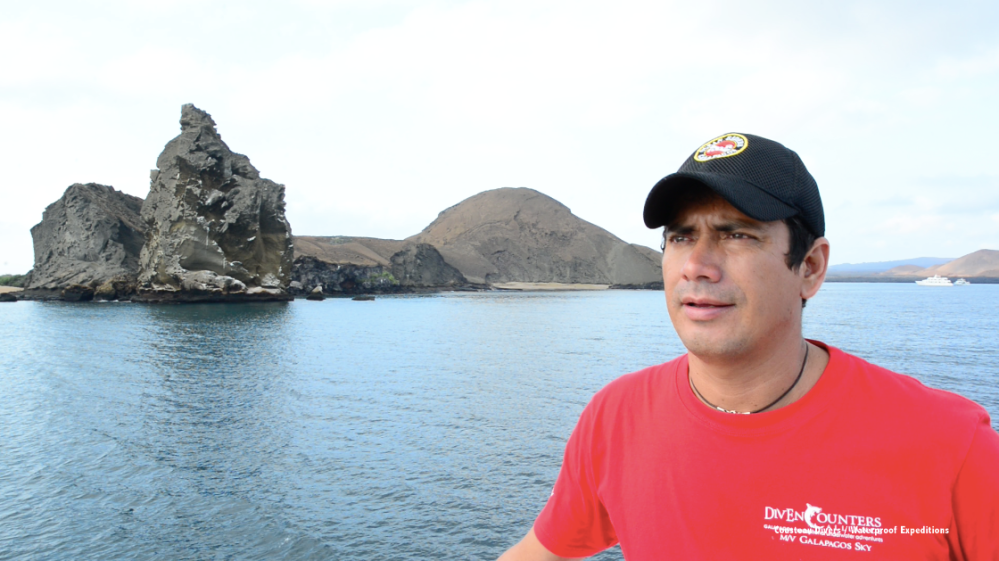
Just as I am zipping up my wetsuit and slipping into my BCD for the next dive, I spot a tiny ship approaching the Sky. Manned by two, it is a fishing craft. The captain hails them. They are perhaps the first poachers of the sanctuary, barely a week after it’s declaration. I can hardly believe the effort they have put into reaching these islands: on their minuscule vessel, they must have sailed for 3 days non-stop in the open sea to reach Wolf, the deck of their boat covered in gasoline containers. The captain tells them that they are not allowed here anymore. They reply that they know, but that their engine broke and that they drifted into the sanctuary… Sure. Today there are only 5 diving operators authorized in the sanctuary, taking turns. That means that at least 2 days a week there is nobody around to report illegal fishing. Our dive guide Jeff says that at least the presence of traditional fishermen dissuaded illegal poachers to enter in the past. The captain of the Sky argues that “traditional” fishermen were sometimes collaborating with poachers.

It seems that despite significant efforts to build consensus and help fishermen reconvert to tourism activities, the actual enforcement of the newly minted Wolf and Darwin sanctuary will be difficult. Let’s hope it’s not another “protection only on paper” and that a new socio-economic balance will be found that allows for meaningful conservation of this precious jewel of the ocean, one of the few remaining.
This concludes the story of the 2016 Cousteau Divers – Waterproof Expeditions Galapagos trip. I leave the islands and return to Europe to pursue my work with IUCN and Cousteau Divers. In the coming weeks, I will release a video compiling the most thrilling moments of the trip. Join me on the next adventure to Tahiti, in July 2017!
~ Pierre-Yves Cousteau
www.waterproof-expeditions.com
For more blogs from Pierre-Yves Cousteau, visit cousteaudivers.wordpress.com.
News
Stay Longer for Less at Temple Point, Kenya with Dive Worldwide
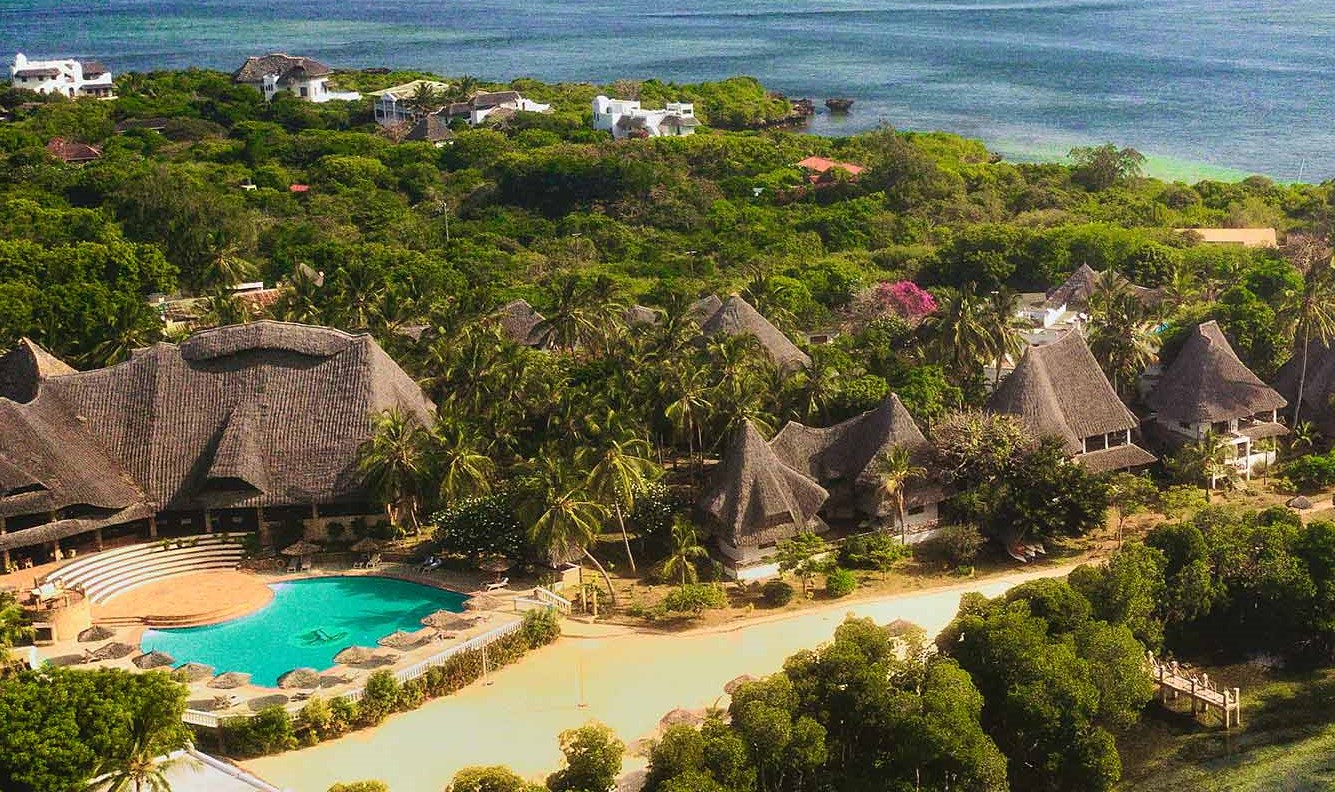
Dive Worldwide has recently introduced Kenya to its portfolio of dive destinations, making it a new must-visit for divers. The company has chosen Temple Point Resort, located in Watamu, a small town on Kenya’s Indian Ocean Coast. The resort embodies the spirit of Kenya, with thatched roof buildings and bright white interiors, complemented with local art. The Creek Deluxe rooms enjoy a creek view and sunset vistas, whilst Boutique Garden rooms offer peace nestled in lush greenery.
An abundance of activities such as golf, stand up paddleboarding and kite surfing await those looking for action; while those in search of rejuvenation may partake in a range of yoga classes, or indulge in the spa. Spend evenings dining poolside dining or lazing in hammocks suspended over the creek; there is no detail missed at Temple Point.
The waters surrounding Temple Point Resort are bustling with life, however, there is also an opportunity to explore on dry land. Tsavo National Park is close enough for a day safari, allowing guests to double up on the wildlife experiences Kenya has to offer, from elephants to whale sharks.
Suggested Dive Itinerary: Dive and Discover Kenya
Embark on an adventure to one of Africa’s finest marine parks, Watamu, the first of its kind in the continent. Created in 1968, Watamu offers excellent diving and snorkelling for those of all experience levels. Lively coral reefs and the surrounding waters are home to over 1,000 species of fish, devil rays, mantas, whale sharks, dolphins and turtles.
DEAL: Stay 12 nights for the price of 10 at Temple Point Resort
Price: Dive and Discover Kenya now costs £2295pp, saving £150 per person. Including international flights from the UK, 12 nights’ B&B (for the price of 10), transfers, 5 days, 10 dive pack, tanks and weights. Based on travel in September ONLY. https://www.diveworldwide.com/trip-ideas/dive-discover-kenya#details
For more information visit: diveworldwide.com or call 01962 302 087
News
Dive Worldwide Announces Bite-Back as its Charity of the Year

Over the next 12 months, specialist scuba holiday company Dive Worldwide will be supporting Bite-Back Shark & Marine Conservation with donations collected from client bookings to any one of its stunning dive destinations around the world. The independently-owned operator expects to raise £3000 for the UK charity.
Manager at Dive Worldwide, Phil North, said: “We’re especially excited to work with Bite-Back and support its intelligent, creative and results-driven campaigns to end the UK trade in shark products and prompt a change in attitudes to the ocean’s most maligned inhabitant.”
Bite-Back is running campaigns to hold the media to account on the way it reports shark news along with a brand new nationwide education programme. Last year the charity was credited for spearheading a UK ban on the import and export of shark fins.
Campaign director at Bite-Back, Graham Buckingham, said: “We’re enormously grateful to Dive Worldwide for choosing to support Bite-Back. The company’s commitment to conservation helps set it apart from other tour operators and we’re certain its clients admire and respect that policy. For us, the affiliation is huge and helps us look to the future with confidence we can deliver against key conservation programmes.”
To launch the fundraising initiative, Phil North presented Graham Buckingham with a cheque for £1,000.
Visit Dive Worldwide to discover its diverse range of international scuba adventures and visit Bite-Back to learn more about the charity’s campaigns.
MORE INFORMATION
Call Graham Buckingham on 07810 454 266 or email graham@bite-back.com
-

 News3 months ago
News3 months agoHone your underwater photography skills with Alphamarine Photography at Red Sea Diving Safari in March
-

 News3 months ago
News3 months agoCapturing Critters in Lembeh Underwater Photography Workshop 2024: Event Roundup
-

 Marine Life & Conservation Blogs3 months ago
Marine Life & Conservation Blogs3 months agoCreature Feature: Swell Sharks
-

 Blogs2 months ago
Blogs2 months agoMurex Resorts: Passport to Paradise!
-

 Blogs2 months ago
Blogs2 months agoDiver Discovering Whale Skeletons Beneath Ice Judged World’s Best Underwater Photograph
-

 Gear Reviews3 weeks ago
Gear Reviews3 weeks agoGEAR REVIEW – Revolutionising Diving Comfort: The Sharkskin T2 Chillproof Suit
-

 Marine Life & Conservation2 months ago
Marine Life & Conservation2 months agoSave the Manatee Club launches brand new webcams at Silver Springs State Park, Florida
-

 Gear Reviews3 months ago
Gear Reviews3 months agoGear Review: Oceanic+ Dive Housing for iPhone



